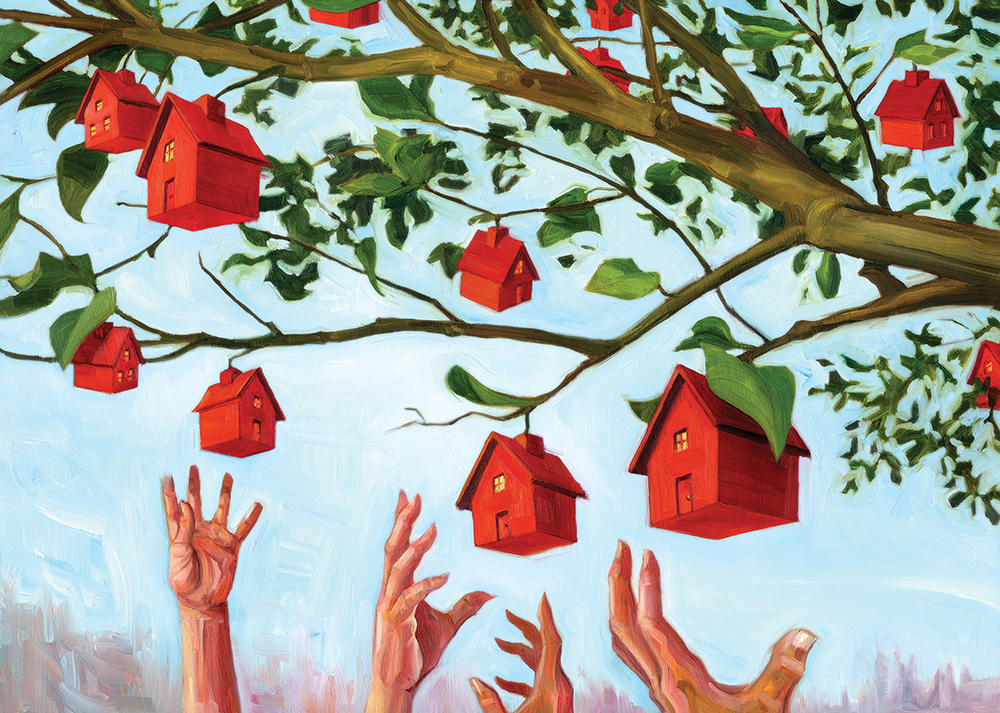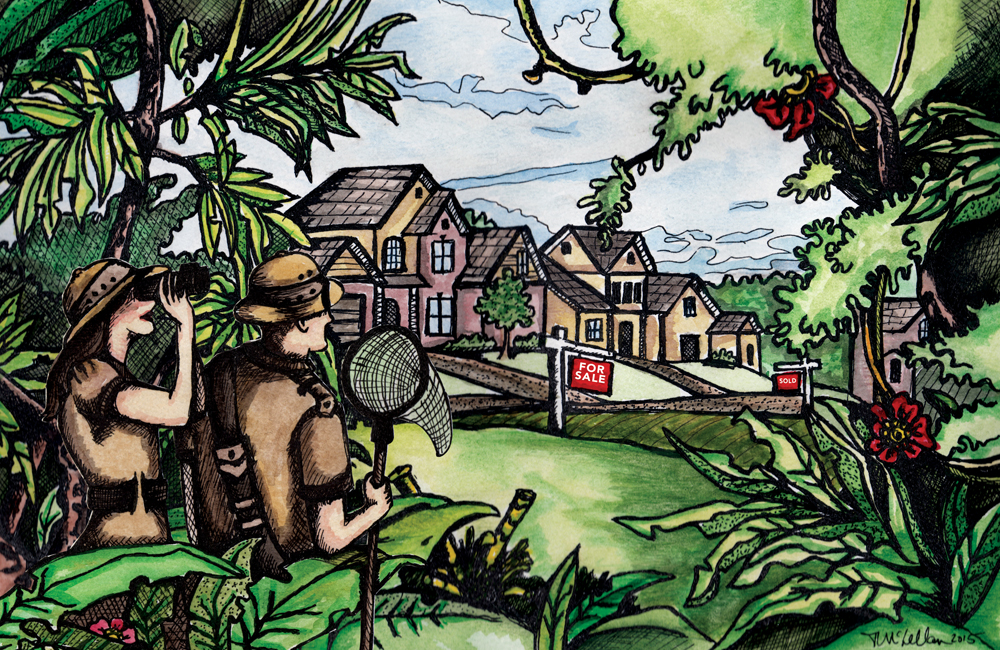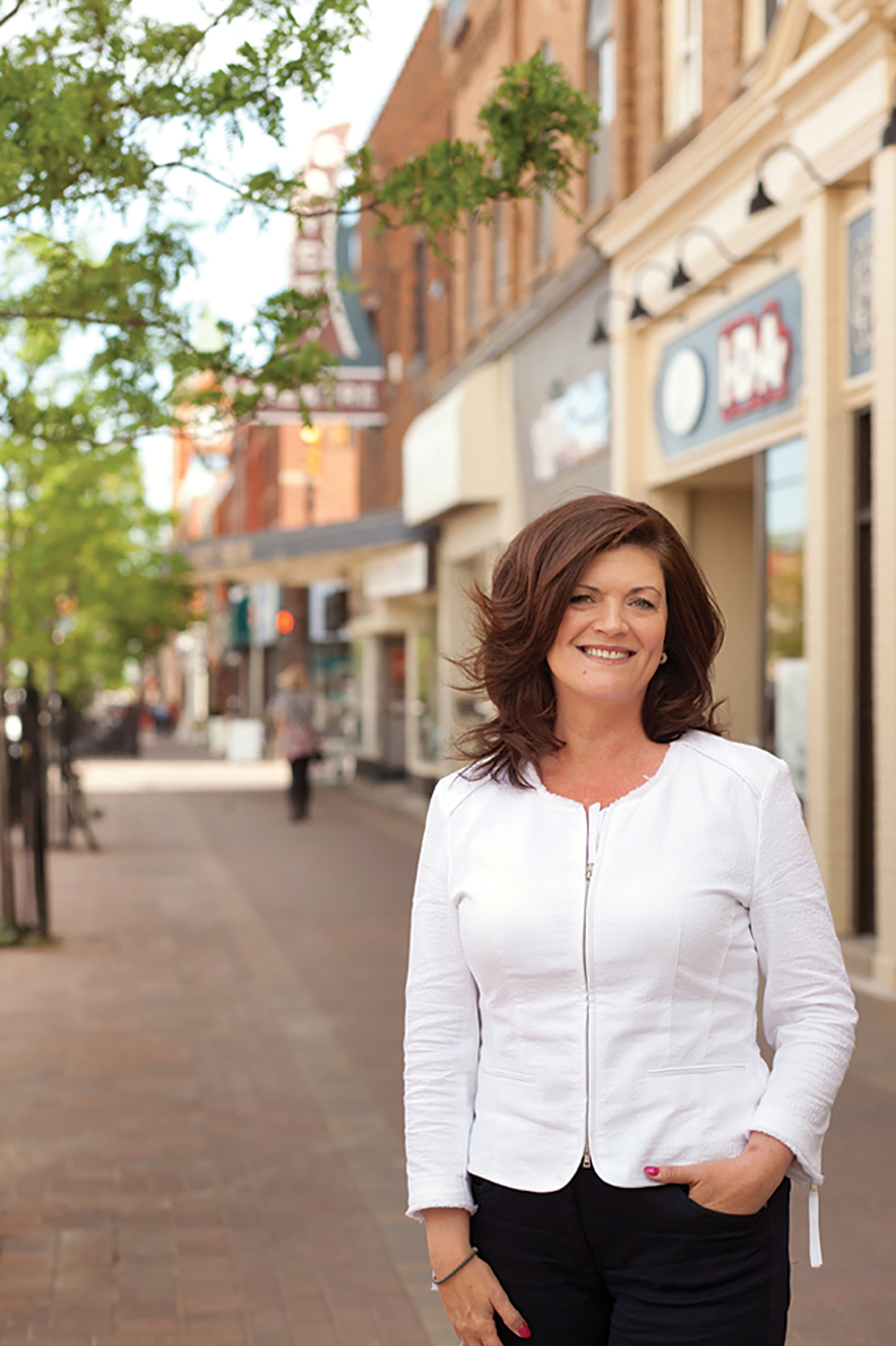New home developers are adjusting to challenging times by
listening to buyers and giving them more of what they want
![]() he times, they are a-changing. Gone, at least for now, are the days when real estate developers in Southern Georgian Bay could market hundreds of cookie-cutter homes or condos, price them at a premium, and meet their sales targets before the shovel ever broke ground. Even before they built it, people came.
he times, they are a-changing. Gone, at least for now, are the days when real estate developers in Southern Georgian Bay could market hundreds of cookie-cutter homes or condos, price them at a premium, and meet their sales targets before the shovel ever broke ground. Even before they built it, people came.
Today’s developers are living a very different reality. Some, unable to sell enough units to secure financing, have been forced to mothball or stall their projects. Many of those who are left, as well as new developers entering our market, are reinventing themselves by taking a customer-focused approach almost unheard-of in boom times: asking prospective buyers what they want, listening, and responding by tailoring their developments to buyer needs and desires.
“We’re dealing with some creative ways of handling things,” says David Rowlands, a broker with Lush Realty who is the sales rep for the Windrose Estates development in Collingwood. “We want to get roofs on the ground there, we want to sell the lots, so we’re open to listening to what people have to say and what they want.”
Today’s buyer is savvy and discerning, notes David Bunston, executive vice president of real estate for Georgian International, developer of the new Windfall development across from Blue Mountain. “People in today’s environment are choosing very wisely what their next investment is or what their next home is,” he says. “Today we’re really cognizant; we think we understand what the buyer is looking for, and we want to make sure that what we build here is very special and will be of value and get off the ground.”
Everything, from the way developments are planned to how they’re marketed, and ultimately how they’re built, is shifting towards giving buyers what they want, marking a sea change for many developers.
“They’re not used to listening to the people, and you have to,” says Laura Smith, director of sales and marketing for the Residences of Cobble Beach near Owen Sound. “There’s so much social media today, and everybody is talking. They’re talking about their lives and where they want to go and what they want to do, and you really have to pay attention.”
The Art of Reinvention
Reinvention for its own sake doesn’t cut it these days; just because it’s new or different doesn’t mean it will attract buyers. So developers aren’t second-guessing their market – they’re asking buyers what they want as the first step to reinventing themselves.
Windfall has done its homework to find out what buyers are really looking for. “We’ve got a lot of focus group research that people are price conscious, but they don’t necessarily look at square footage,” says Bunston. “They look at what is the house. Does it have a mudroom? Does it have a master bedroom on the main floor? Can I grow old in this house? So square footage, whether it’s 200 square feet here or 200 square feet there, doesn’t really matter. Function was very important when we designed the homes, and also the features and the finishes. So there would be a perception of value that exceeds price. We’re priced competitively, but the product itself … has to be something very easily understood; very aspirational.”
The result of all that research is a development of detached homes (bungalows, bungalows with lofts and two-storeys) in the 1,400-square-foot to 2,800-square-foot range designed with curb appeal and “artful architecture” in mind – high-pitched roofs, deeper soffits, front porches and verandas, detached garages allowing for centre staircases in the homes, and large windows on all sides.
“It’s a more expensive way to build homes, but it just looks so much better. We think that is unique in and around the entire area,” says Bunston. “We were extremely thoughtful – we didn’t want to bring something that was already out there. We also developed a master plan that was very thoughtful in terms of how the project would be laid out in terms of enclaves.”
The first enclave being marketed is the smallest, with only 37 homes – meaning fewer homes have to be pre-sold before the project can obtain financing and get underway. “If you have 100 homes, that’s a longer time frame and buyers don’t know if you’re three years away, two years away or one year away,” says Bunston, adding smaller phases enable the developer to adjust to a changing market. “This is a 10- to 11-year project in terms of its full build-out, so we’ll be able to look at the market and see what people are demanding as we go along. We have the ability to market the enclaves separately, which was strategic. We can change the style and the interpretation of the architecture down the road. We did that strategically.”
Cobble Beach – at the mid-way point of its development – conducted customer surveys to find out what customers were really thinking, and came up with a whole new product offering at a lower price point. Instead of only selling lots for custom homes overlooking the golf course, Cobble Beach has now launched a new series of ‘cottage-style’ bungalows with lofts starting at $398,900 as well as ‘townhome bungalofts’ starting at $348,900 – price points that didn’t previously exist in the planning for the site.
“We’re still offering beautiful lots for sale, but we’re now offering more,” says Smith. “People sometimes don’t want that larger home or that custom home; they just want a little bungalow … it’s a second home for some people, and they just want to come up in the summer, enjoy all the amenities, and go home. We’re listening to what they’re looking for, and reacting to that.”
There’s also a major shift in development at Blue Mountain. Skyline International Development recently purchased the undeveloped land from Intrawest in and around Blue Mountain Village, announcing it plans to double the Village’s current residential and condo-hotel footprint, building over 1,200 residential and condo-hotel units, townhouses and single-family homes in the years ahead. Skyline’s first phase will see four new development blocks within the Village, mostly condos and some townhomes.
But the real news is that Skyline will redesign the original Intrawest concept, “to something that’s more in keeping with the market going forward,” says Skyline CEO Michael Sneyd. “All of the units within the Village were sold as essentially hotel condominiums and they were sold primarily as investment units. What we’ve seen is a change in the marketplace. We’ve seen that buyers today want to have fun with their resort real estate, and they’re not as focused on the investment income from that real estate. So we will bring whole ownership condominiums to the marketplace where you have the option but not the obligation to participate in a rental program rather than a rental pool.”
What this means is that owners will be able to decide whether or not they want to rent out their units, and if so, what times of year they want to rent them out. “It allows families to buy the real estate and be able to use it,” says Sneyd. “We think the rental program model is much more flexible and really meets the needs of today’s Baby Boom generation and even the Generation X families that are reaching a stage where they want to take advantage of resort real estate.”
The reason behind Skyline’s new tack? “When people realized how much they wanted to use their units at Blue Mountain and they realized that there were restrictions or the use of those units, they found that the rental pool concept didn’t meet their needs.”
Whether it’s flexibility, smaller units, lower pricing, or more charming architecture, developers today are adjusting to meet consumer demands.
Variety & Scalability
Whereas in the past developers could target niche markets, such as retirees or those looking for large, custom homes, they’ve learned that in today’s climate it’s important to offer something for every type of buyer, from retirees to families wanting a recreational getaway, to those looking to downsize. Savvy developers are no longer planning subdivisions of similar-sized homes or townhomes; they’ve figured out that offering variety is the only way to target individual buyers.
While Cobble Beach’s main customers are retirees looking to be close to hospitals, medical facilities and shopping, not all retirees are the same – some don’t want the work of a larger home or property.
“Everybody is not the same,” says Smith. “They all have different requirements, and it’s hard to just say we’re going to build a ton of townhouses and that’s what you have to accept, or a ton of lake houses. Instead we’re giving them a little bit of everything. You’ve got to give people lots of choices.”
Scalability is also a selling point for some developers – the ability to finish a basement, add a loft or customize the layout to suit your needs ensures that buyers have options.
“If someone says I’m just an empty nester and I’ve got a couple of kids, I can get a bungalow and live very well and finish the basement and have tons of room for people to come over and sleep, or media rooms, or I can get a larger home, they’re scalable,” says Windfall’s Bunston. “We’ve got almost a house type for every person’s need. If you’ve got a growing family, if you’ve got kids that have moved out and they have kids now who want to come up and visit grandma and grandpa, these homes can accommodate. They’re very scalable and very malleable to almost any type of buyer. They can say, ‘do you have this type of home’ and the answer is yes.”
Developers are looking closely at the demographics, and trying to appeal to as many demos as possible in order to ensure success.
“For us there are different demos,” says Skyline’s Sneyd. “There are demographics of the young families who are looking for resort real estate that they can spend weekends and extended vacation times with their families in the resort setting. For those families, Blue Mountain is really the premier location in S. Ontario and this is an excellent opportunity for them to spend time with their families in ways they just can’t do otherwise. Then there’s also the appeal for the empty nesters within the GTA who are looking to downsize and improve their quality of life by having a home in a resort setting along with the opportunity to travel or spend winters in warmer locations. And one of the appeals of Blue Mountain is it’s also right beside Collingwood, with its shopping and its entertainment and also its hospital. And this is a big appeal for empty nesters.”
There is no longer a one-size-fits-all approach. By understanding their demographics, and offering something for everyone within those demographic segments, developers hope to target as many potential buyers as possible. For potential buyers, this means you don’t have to ‘settle’ for something that doesn’t entirely suit your needs.
Lifestyle & Amenities
Another key to succeeding in today’s tough market is providing amenities to enhance the lifestyle of the residents, say developers.
Cobble Beach had the right idea from the start, focusing first on building the amenities before going to market in a big way. As a result, the property is now home to an award-winning golf course as well as trails, tennis courts, beaches, a gym and a spa.
“We’re one of the golf resort communities that do have the amenities there already,” says Smith. “We’re not just talking about them; we already have them.” However, she adds, amenities alone won’t make the sale if the price is out of reach for most buyers. “People are choosing the lifestyle, but it has to be affordable – they lost a lot of money in the markets themselves or their pensions so they’re rethinking their lifestyle, too. So we’re listing to what they’re looking for and reacting to that.”
The ‘subdivision feel’ is out. Buyers today are looking for a community, in which they can pursue their activities and enjoy the outdoors.
“One of our master plan elements is a huge greenbelt that runs east-west, connecting Blue Mountain to our other neighbour, which is Scandinave Spa,” notes Windfall’s Bunston. “We gave up density, we gave up units to create this massive greenbelt. So we’ve now connected what we think is a remarkable recreational benefit, the spa, which is connected to us through the trail system.”
In addition to four kilometres of hiking, biking and walking trails, the development will incorporate nature corridors, forest preserve and a wetland preserve. “One-third of the project is going to be left in its natural state, or it’s going to be park and recreation, and we think that is quite unique,” says Bunston. “We did that as part of a purposeful plan. We’re surrounded by green and forestry and natural land, but we wanted to make sure the inhabitants felt like they were living in a resort but also in nature.”
Windfall will also include a skating pond, cold fishery streams, and a social house with a pool called ‘The Shed’, which Bunston describes as “an indoor-outdoor four-season gathering place exclusive to Windfall buyers.”
Even in Blue Mountain Village, where amenities abound, Skyline is offering additional lifestyle perks for buyers through its Skylife Club, which gives owners access to all of Skyline’s other properties – Horseshoe Resort, Deerhurst Resort, a new development in Port McNicoll, as well as Toronto’s King Edward, Pantages and Cosmopolitan hotels. The initiation fee of $25,000 per family will be waived for those who purchase one of the new units Skyline will be building at Blue Mountain.
“It’s a family club, a lot like a country club, but with multiple locations,” he explains. Members of Skylife will be able to golf or ski at Horseshoe and Deerhurst, or use the boating facilities Skyline will be incorporating into its development in Port McNicoll. “It’s a great opportunity for families to be able to enjoy than just the property or resort that they have decided to locate at. At the same time, when they come into the city, they get special rates on our hotel rooms within the city and they can use the concierge floors.”
Developers in Southern Georgian Bay have always been selling the lifestyle, but now more and more of them are actually augmenting or enhancing that lifestyle for their buyers.
While developers are optimistic about the future of the new home market in Southern Georgian Bay, it’s clear that they are tuning in to buyer wants and needs in order to ensure success. “We had to differentiate; we had to truly bring value to the buyer because otherwise you’re just like everybody else and then you’re competing on an even ground,” says Windfall’s Bunston. “In a challenging market, you’re dealing with smart buyers so you have to be a smart developer.”
The upshot is that buyers interested in purchasing a new home in Southern Georgian Bay could ultimately benefit from these challenging economic times, with a new home or condo that will fit them and their lifestyle for years to come.![]()















